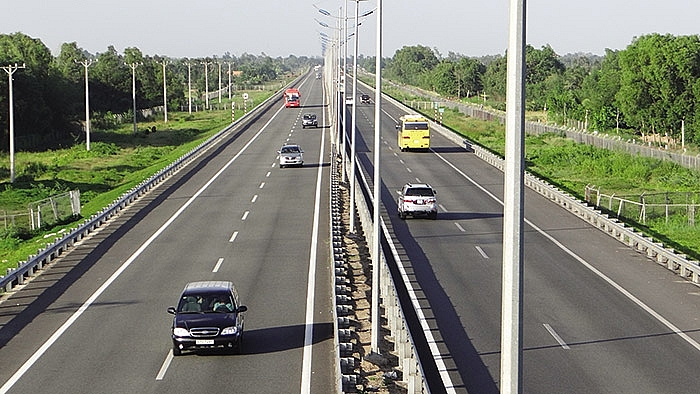Preparing for the next level of PPP regulation
 |
| Tony Foster, managing partner at Freshfields Bruckhaus Deringer LLP in Vietnam |
The public-private partnership (PPP) investment regime in Vietnam has reached adult age. It will be 21 years old in 2019, and the government is planning a big birthday party.
PPP in Vietnam dates back to 1998 with the issuance of Decree 62 on foreign investment in build-operate-transfer (BOT) projects. It was aimed at channelling private investment into Vietnam’s challenging infrastructure sector. There was limited infrastructure in those days and almost endless needs. The infrastructure now is much more extensive, but oddly enough the needs appear to be just as endless today.
Glories of the past
The power sector has been the most successful sector at attracting foreign investment in BOT projects. Phu My 3, Phu My 2-2, Mong Duong 2, Nghi Son 2, and Van Phong 1 are amongst various successful multibillion-dollar BOT power projects with foreign financing. These five projects alone have relieved the government of about $10 billion of budgetary expenditure. They are world class projects, featuring a sparkle that reflects well on Vietnam and hence attracts others to invest in the country.
The fine work of the Ministry of Industry and Trade and the government over the years in the power sector has established a moving, but reasonably accepted, risk allocation mechanism and practice for power projects, providing reasonable clarity to international sponsors and financiers. Plenty of other power projects could be done following roughly in the slipstream of prior projects if the government wants them. Plenty of such schemes are in the works.
Outside of the power sector, the light is not so strong. To its credit, the government has step-by-step pulled together a legal framework to facilitate PPP developments. At least seven governmental decrees have been issued on PPP. Earlier this year, the government upgraded its ambitions. It plans a new PPP law with the hope of eliminating the viruses that have defeated the lesser decrees.
So what are these bugs? Our best information suggests that, other than BOT power projects, there have been no PPP projects involving foreign banks that comply with the formal PPP regime. There have also been no projects benefiting from viability gap funding, which is the central feature of the regime.
Of course, there have been plenty of projects labelled PPP now that BOT and build-transfer (BT) has been merged into PPP, with government figures counting about 280, but they appear to be mostly power BOT projects and road or bridge BT projects. They do not appear to have gone through the non-BOT or non-BT programme for PPPs.
 |
| There has been a trend in governments across the globe making greater use of various PPP arrangements Photo: Le Toan |
What is ailing PPP?
There are no rules on how to obtain viability gap funding, so private investors and the government body trying to do a PPP project, namely Authorised State Agencies (ASAs), do not know what they can ask for or how to get it. Viability gap funding is the central element of PPP. The absence of viability gap funding principles means that many sponsors and ASAs think that any given PPP project will take a very long time. So to put it bluntly, they are not very interested.
The current Decree 63 on PPP and its predecessor, Decree 15 (PPP decrees), are not sufficient to create a comprehensive framework for investments. Requirements for non-PPP projects have crept into the decrees. This is because a law in any sector has a higher legal rank than the PPP decrees. Instead of focusing on developing key outcomes required for a project, the government body trying to do a PPP project has to comply with various impractical requirements aimed at the non-PPP situation. As a result of these prescriptive legal requirements, projects have encountered significant delays or even failed.
The lack of a clear risk allocation mechanism for specific sectors has also left both the public and private parties in a PPP venture in the mist. The law does not provide guidance on risk allocation but defers to the ASAs to negotiate and reach agreement with the sponsors. Meanwhile, due to the lack of successful PPP projects, both the ASAs and private parties in a PPP project have struggled with how to divide the risks.
PPP is difficult everywhere in the world. Vietnam needs a class of experts who can administer programmes in each sector. This is still a work in progress except in the power sector, which has gained a lot of experience. There are also many bankability hurdles. Examples include restrictions on the mortgage of land use rights to foreign lenders, narrowing government guarantees on foreign exchange risks and off-taker risks, and taxes on interest of foreign loans. All of these issues have been debated at length amongst the government, investors and financiers without effective solutions.
Sunlit uplands of the future
The good news is that the Vietnamese people never give up. The government’s proposal for a new PPP law brings new hope.
As a law is superior to a decree, the new PPP Law should supersede inconsistent provisions in other laws. Instead of having to comply with impractical provisions of other laws in preparation and approval of PPP projects, the ASAs should only be required to set out the outcomes desired in putting the project out to tender. The bidders would have the flexibility to structure projects in a manner that best achieves the outcome desired and that complies with applicable laws.
The PPP Law should provide clear principles to help the ASAs develop risk allocation mechanism in their respective sectors. The law should not be too prescriptive, so as to avoid limiting the parties’ flexibility. However, it should lay out a legal basis for the ASAs to accept the sharing of certain risks with the investors. The scope of available guarantees, further visibility into gap funding principles, and principles for making termination payment and risk sharing in case of force majeure events are amongst the main gaps that the new PPP Law could fill in.
This law could enhance the creditworthiness of PPP projects by eliminating existing restrictions on borrowing and security interests. By way of example, the new PPP Law should supersede the Land Law to allow PPP land to be mortgaged to Vietnamese agents of foreign banks even when the land is exempt from land rental. The mechanism for refinancing or raising capital on the capital market by way of bond issuance should also be considered to make the projects more attractive to international lenders.
Marching up the foothills
There is no doubt that a good PPP programme must first start from a strong legal framework. But the new PPP law will take time to get right. In the meantime, it is important that momentum is not lost.
The government could take robust action, including creating ad-hoc mechanisms to create templates projects in certain PPP sectors. Waste treatment and water supply would be suitable for these template projects as they are of manageable size. Airports and roads should also be prioritised because of the fast-increasing travel needs of a mobile population in an elongated and fast-growing country. These pilot projects would provide helpful precedents that would both inform the crafting of the new PPP Law and also, possibly, enable a roll-out of projects in such sectors.
One cannot doubt Vietnam’s bright future. A newly-resurgent PPP programme, which keeps the lights glowing brightly, would be an appropriate birthday present for 21 years of the PPP investment era.
What the stars mean:
★ Poor ★ ★ Promising ★★★ Good ★★★★ Very good ★★★★★ Exceptional
Related Contents
Latest News
More News
- UOB sees Vietnam growth easing in fourth quarter (December 22, 2025 | 17:39)
- Government moves to establish International Financial Centre (December 21, 2025 | 21:00)
- Vietnam's IFC to target global investment flows (December 21, 2025 | 18:00)
- Ha Tinh breaks ground on major Vingroup industrial and energy projects (December 19, 2025 | 18:24)
- EVN launches major power infrastructure projects nationwide (December 19, 2025 | 18:17)
- VAL inaugurates second production line to meet domestic animal feed demand (December 19, 2025 | 16:37)
- Sun Group pioneers urban tram system in Phu Quoc (December 19, 2025 | 15:00)
- Top 10 notable events of Vietnam’s industry and trade sector in 2025 (December 19, 2025 | 14:00)
- Seven major projects launched to drive Hanoi’s next growth phase (December 19, 2025 | 14:00)
- Rare, beautiful, sustainable: the mark of iconic real estate (December 19, 2025 | 08:00)

 Tag:
Tag:





















 Mobile Version
Mobile Version